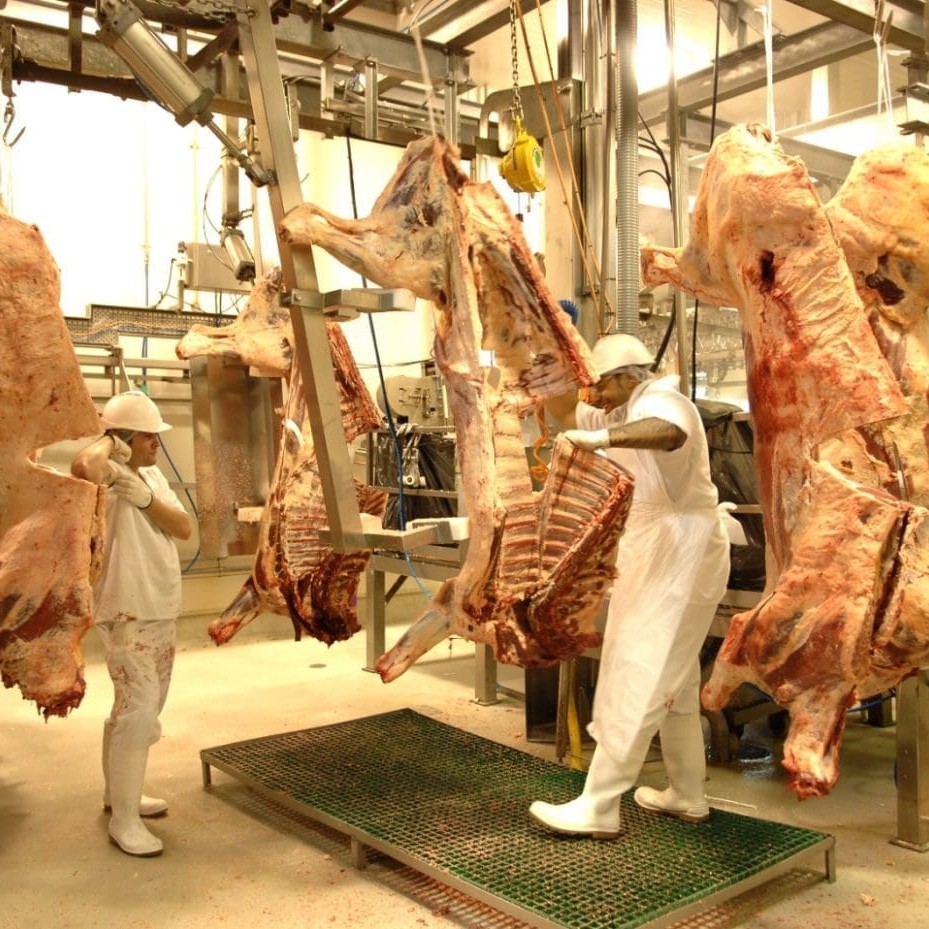 Substantial downwards corrections in meatworks grid prices over the past three or four weeks have hardly put a dent in slaughter cattle flows, as the large evacuation of stock from parched inland and northern regions of Eastern Australia continues.
Substantial downwards corrections in meatworks grid prices over the past three or four weeks have hardly put a dent in slaughter cattle flows, as the large evacuation of stock from parched inland and northern regions of Eastern Australia continues.
While last week’s Eastern States beef kill tally was impacted heavily by the Easter Monday public holiday, this week is shaping up as another very heavy week for throughput, processor contacts said yesterday.
One regular Queensland processor contact predicted the state’s kill this week could easily go close to 80,000 head this week again, judging by the number of plants scheduling weekend shifts and higher kill-floor and boning-room manning levels to cope with the numbers. And that will be despite the normal seasonal closure of Harmony Group’s Kilcoy Pastoral Co grainfed plant in the state’s southeast for a few weeks, taking about 4000 head out of the equation.
Two of the nation’s largest plants in southeast Queensland have a Saturday kill and bone ‘pencilled-in’ for this week, in a move designed to keep on top of current cattle numbers. Again access to livestock transport is likely to be a limiting factor.
In southern states, two short kill weeks back-to-back is likely to guarantee another big throughput this week, but the consensus among processors seems to be that the upcoming ANZAC day holiday shortened week (April 25) will spell the last of the south’s big kills for the current seasonal cycle. After that, national slaughter numbers may start to ease a little again.
Another minor factor is the start of regional public holidays associated with local agricultural shows, which will have a minor but fairly constant softening effect in national kills over the next six months. The upcoming Toowoomba show holiday, for example, will take a couple of sizeable export sheds out of the equation for a day.
The National Livestock Reporting Service’s weekly kill report issued yesterday showed an Eastern States tally of 120,749 head for the seven days ended Friday – not much changed from the previous week, which was also affected by shortened Easter kills.
Queensland’s kill was down a fraction to 62,822 head, but the big interest was in the proportion of females in the state’s kill. At above 43 percent, it was the highest for the year so far, and figures at that rate or higher, if maintained, normally spell herd reduction.
Southern states’ kills were also largely unchanged, with NSW +5pc at 28,800; Victoria +1pc at 18,700 head; South Australia +1pc at 6689 head and Tasmania +4pc at 3737. The NLRS does not provide data on rates of kill in Western Australia.
Looking at the eight-day weather forecast, there is no significant change in weather likely in the immediate future to change the current circumstances.
Today’s Roma store sale is drawing for about 10,500 head – not quite at the extreme levels seen before Easter, but still high enough to cause concern, in terms of matching vendor and buyer demand.
While Southeast Queensland public grid prices quoted to Beef Central yesterday were unchanged on this time last week, the accumulated losses over the past month are now 20-40c/kg dead weight in places.
The top of the SEQ cow grid yesterday sat at around 275c-280c/kg, four-tooth grassfed ox around 300-305c, and milk-tooth heavy steer around 310c. Top cows have now declined a full 35-40c/kg dressed weight since mid to late February, on southeast Queensland grids, in reflection of the heavy supply conditions.
As discussed on Beef Central last week, EU grassfed prices are proving to be most resilient to the current declines in pricing, but MSA yearling has equally stood up well. MSA grassfed steer is still around 345-350c/kg, much less affected by current price downturn. Commodity 100-day and 70-day grainfed (non-MSA) cattle sit at 340-345c.
The nation’s three largest export processors have all commented on significant declines in average weights in slaughter cattle compared with this time last year, as the effects of the inland drought are seen in kill performance.
“A lot of people in drought affected areas haven’t started the lightening-off process yet, so there are still a lot of cattle to come. This cycle is a long way off finishing yet,” one large processor said yesterday.
- The Eastern Young Cattle Indicator finished at 324c/kg yesterday, down another 1.75c on Friday’s close. Compared to prices this time last year, some NLRS benchmark categories are now back as much as 70¢/kg liveweight.
